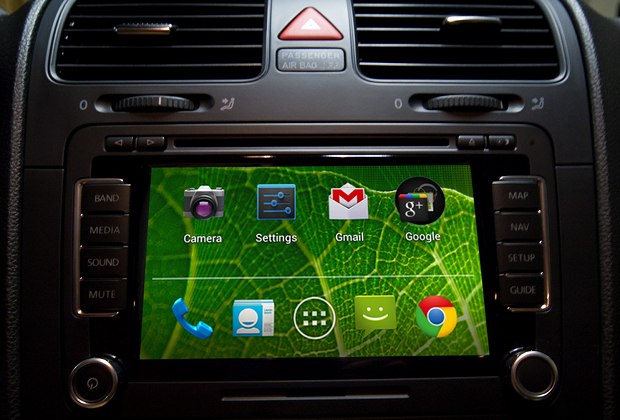Why proprietary in-car navigation systems need to die


Ah, the joy of car shopping.
Next week, I'm going to be driving the 1,260-mile trek to our new Florida home. Be it as it may, only one of our cars is migrating with us -- I decided that the oldest of our two vehicles was going to get donated to charity, as it needed considerable repairs and shipping it on a tractor trailer was going to be prohibitively expensive and not worth it given the age and value of the car.
So we decided to look at a number of new and previously owned cars this weekend -- Lexuses, Toyotas, and Volkswagens.
Right now, I think the Volkswagen Passat TDI is in the lead for my vehicle of choice, but I still have to take a look at the Sonata Hybrid.
Regardless of the cars and the manufacturers I looked at, one thing I noticed was the tendency to upsell or bundle in the built-in auto navigation systems with "packages", particularly if you want other premium features, which ends up adding considerable cost to the vehicle.
Honestly, these built-in automobile navigation systems suck. Compared to the smartphone-based navigation apps I have seen built into the iPhone and Android, they are way behind technologically.
Not only are these systems ridiculously expensive for what they offer, but the user interfaces are atrocious, and they also don't have the benefit of being updated with dynamic information from the Cloud using a 3G or 4G data connection.
You have to pay to get the map updates (which are expensive) and they don't have the level of GPS and data services/app integration you can get on your phone.
And while the legislation is currently delayed, it is probably inevitable within the next five years that new cars sold in United States will need to have an in-car display unit which is to be used with a rear-view video camera.
So why not put that display to better use?
Just like automotive electronics have standards for hands-free Bluetooth audio, it seems apparent to me that there should be a standard established for which a multi-function touchscreen display and car audio could be integrated or wirelessly connected to a smartphone, regardless of the manufacturer.
The connection could be done via Bluetooth v3.0+HS, or through the proposed Bluetooth 4.0 implementation.
Essentially, this would be a thin-client type of remote display and remote audio session, not unlike what Apple does with AirPlay and screen mirroring on their own devices.
An existing standard established by the Car Connectivity Consortium, known as MirrorLink and formerly known as "Terminal Mode" has been under development for some time, but has not gotten broad industry buy-in by actual automobile vendors to install it as factory equipment.
So far, only SONY has released a line of aftermarket car radios which use it, and Alpine will be offering a MirrorLink-based aftermarket system in the United States in 2013.
Ideally, this standard would include some type of "Car Mode" or specialized automotive user interface designed for each mobile OS, whether it is iOS, Android or Windows Phone.
It would primarily be used to display the navigation UI and for call management, but it could also be used for in-car multimedia controls or even a display mode for specific types of applications, such as a restaurant search program or text messaging notification.
Such a car network could make use of an intelligent agent like Siri, which could act as personal assistant and would manage the information data streams and could report them to the driver as needed, such as critical automobile telemetry or even traffic alerts and dynamic route guidance.
This would have a number of advantages. First, it prevents the in-car navigation and multimedia features from going obsolete, because the lifetime of the smartphone is only a fraction of a car's lifetime.
A smartphone may be used for two or three years and will be replaced likely after a wireless contract expires, whereas a car lives upwards of ten years or more, particularly if it goes through more than one owner.
Second, the electronics for integrating this sort of thing would be far less complicated and proprietary than what exists in cars now.
The entire platform could be reduced to a replaceable 5" backlit LCD touchscreen and probably a very low power ARM-based SoC with integrated Bluetooth/Wi-Fi transceiver, not unlike what exists in the Raspberry Pi $25 Linux computeror an Apple TV.
And it would need just enough OS (JeOS) to run the in-car network. That's it.
The hard buttons in a car's main "stack" could be completely eliminated, or they could be standardized and streamlined for use with this display unit.
This "embedded carputer" would be no more than $100 worth of hardware total, and that would include additional "options" such as satellite radio, which could be software-enabled via subscriber service entitlements.
Third, by interfacing the car with one's personal smartphone, it allows for much more personalization of services. A car might be shared by a husband, a wife (or life partner) and one or more teenage drivers, each of which owns their own smartphone.
Each person would have their own apps installed on their phone, and also would store their own saved destinations, routes and waypoints.
In a household where you have more than one automobile, or if you need to rent a car when you travel, it's simply just a matter of the person wirelessly attaching to that car's internal network with their smartphone, and all of their personal data goes with them, cloud and all.
Like the dedicated mobile navigation device, are dedicated in-car navigation systems due for a smartphone disruption? Talk Back and Let Me Know.